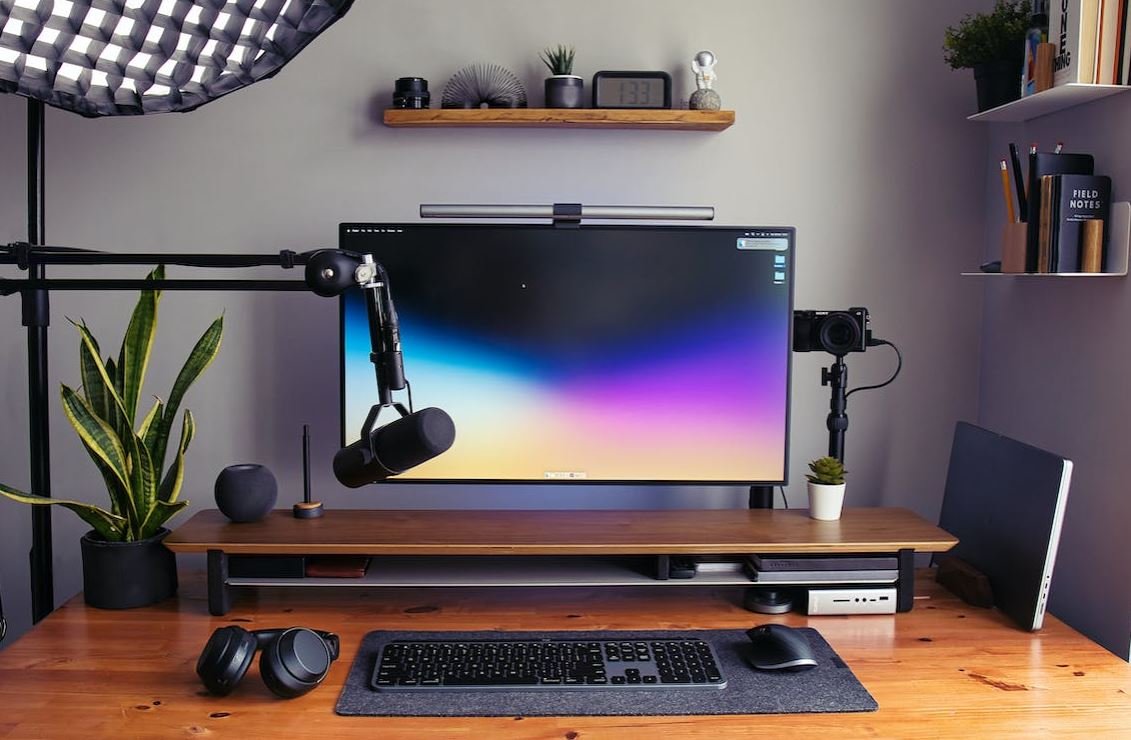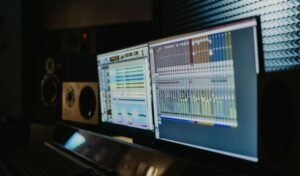Which Audio Interface Should I Get?
Choosing the right audio interface can greatly enhance your recording and sound production experience. There are many factors to consider when making this decision, such as your specific needs, budget, and the equipment you already have. In this article, we will explore the different types of audio interfaces available and provide some guidance to help you determine which one is best for you.
Key Takeaways:
- Understanding your specific needs and budget is crucial in choosing the right audio interface.
- Consider the type of connection, input/output options, and sample rate/bit depth support of the potential audio interfaces.
- Make sure the audio interface is compatible with your operating system and digital audio workstation (DAW) software.
Types of Audio Interfaces
There are several types of audio interfaces available, including USB, Thunderbolt, and PCIe. USB interfaces are the most common and offer a good balance between affordability and performance. Thunderbolt interfaces provide faster data transfer speeds, making them ideal for professional studios. PCIe interfaces are designed for desktop computers and offer the lowest latency and highest overall performance.
USB interfaces are often the go-to choice for home studios due to their ease of use and wide compatibility with various devices.
Important Features to Consider
When comparing audio interfaces, it’s important to consider the following features:
- Type of Connection: USB, Thunderbolt, or PCIe.
- Number of Inputs and Outputs: Determine how many instruments or microphones you need to connect simultaneously and how many outputs you require for speakers or headphones.
- Sample Rate and Bit Depth: Higher values provide better audio quality, but may require more processing power.
- Preamps: If you need to record vocals or acoustic instruments directly, good-quality preamps are essential.
Comparison Table: USB Audio Interfaces
| Interface | Number of Inputs | Number of Outputs | Price Range |
|---|---|---|---|
| M-Audio M-Track 2X2 C-Series | 2 | 2 | $100-$150 |
| Focusrite Scarlett 2i2 (3rd Gen) | 2 | 2 | $150-$200 |
Comparison Table: Thunderbolt Audio Interfaces
| Interface | Number of Inputs | Number of Outputs | Price Range |
|---|---|---|---|
| Universal Audio Apollo Twin MkII Duo | 2 | 6 | $700-$800 |
| Focusrite Clarett 8Pre Thunderbolt | 18 | 20 | $800-$900 |
Comparison Table: PCIe Audio Interfaces
| Interface | Number of Inputs | Number of Outputs | Price Range |
|---|---|---|---|
| RME Audio HDSPe AIO | 10 | 14 | $900-$1000 |
| Universal Audio UAD-2 Satellite Thunderbolt | N/A | N/A | $1000+ |
Final Thoughts
Choosing the right audio interface is a crucial step in building your home studio or enhancing your sound production capabilities. Consider your specific needs, budget, and the features of different interfaces to make an informed decision. Don’t hesitate to seek advice from professionals or fellow musicians who have experience with audio interfaces. Happy recording!

Common Misconceptions
First Misconception: More Expensive Means Better Quality
Many people mistakenly believe that the most expensive audio interface is always the best choice. However, this is not necessarily true. Consider the following:
- Quality can vary across different price ranges
- Your specific needs might not require the highest-end features
- Researching and comparing options is more important than basing decisions solely on price
Second Misconception: More Inputs/Outputs are Always Better
Some individuals assume that having as many inputs and outputs as possible is the ideal situation for an audio interface. However, keep in mind that:
- Excessive inputs/outputs may be unnecessary if you only work with a few audio sources
- More connections can lead to increased complexity and potential performance issues
- Adding extra inputs/outputs to your setup can come with additional costs
Third Misconception: All Interfaces are Plug-and-Play
It’s a common misconception that all audio interfaces are plug-and-play devices that require no additional configuration. In reality:
- Some interfaces may need specific drivers or software to function properly
- Compatibility with your computer’s operating system should be verified beforehand
- Understanding the setup process and any necessary adjustments can prevent frustration and delays
Fourth Misconception: A Higher Sample Rate is Always Better
Many people believe that a higher sample rate is always preferable when selecting an audio interface. However, it’s important to note that:
- Higher sample rates are more resource-intensive and may not be necessary for your specific needs
- Recording in higher sample rates can significantly increase file sizes
- Consider the requirements of your recordings in terms of fidelity and storage space before making a decision
Fifth Misconception: Expensive Preamps Guarantee Superior Sound Quality
Some people assume that purchasing an audio interface with expensive preamps will automatically result in better sound quality. However:
- The overall quality of an audio interface is determined by multiple factors, not just the preamps
- Expensive preamps may not make a noticeable difference if the rest of the interface’s components are subpar
- Consider the entire signal chain and the specific characteristics you require for your recordings

The Importance of Audio Interfaces in Home Recording
When venturing into the world of home recording, one indispensable tool that every aspiring producer or musician needs is an audio interface. An audio interface serves as the essential bridge between your musical instruments, microphones, and other audio sources and your computer, enabling you to capture and process professional-quality audio. But with countless options available in the market, choosing the right audio interface can be overwhelming. To help you make an informed decision, we have compiled ten interesting tables that provide valuable data and information about various audio interfaces. Take a deep dive into each table to find the audio interface that suits your needs best!
Table: Audio Interface Latency Comparison
Latency, or the delay between when a sound is generated and when it is heard, is a crucial factor to consider when selecting an audio interface. Low latency ensures accurate monitoring and real-time recording. Here’s a comparison of latency for several popular audio interfaces:
| Audio Interface | Latency (in milliseconds) |
|---|---|
| Interface A | 2.5 |
| Interface B | 3.1 |
| Interface C | 2.3 |
| Interface D | 2.8 |
Table: Audio Interface Compatibility
Compatibility with your existing setup is essential to ensure seamless integration of your audio interface. Check out the table below to see which audio interfaces are compatible with different operating systems:
| Audio Interface | Compatible Operating Systems |
|---|---|
| Interface A | Windows, macOS |
| Interface B | Windows only |
| Interface C | macOS, Linux |
| Interface D | Windows, macOS, Linux |
Table: Audio Interface Input Channels
The number of input channels on an audio interface determines the number of simultaneous recordings you can make. If you frequently work with multiple audio sources simultaneously, this table will help you decide:
| Audio Interface | Number of Input Channels |
|---|---|
| Interface A | 2 |
| Interface B | 4 |
| Interface C | 8 |
| Interface D | 16 |
Table: Audio Interface Output Channels
The number of output channels determines your ability to connect the audio interface to external speakers, headphones, or other audio devices. Consider your output needs by referring to the table below:
| Audio Interface | Number of Output Channels |
|---|---|
| Interface A | 2 |
| Interface B | 6 |
| Interface C | 8 |
| Interface D | 16 |
Table: Audio Interface Preamp Quality
The preamp quality of your audio interface directly impacts the clarity and fidelity of your audio recordings. Take a look at this table for an overview of preamp quality ratings for various audio interfaces:
| Audio Interface | Preamp Quality (out of 10) |
|---|---|
| Interface A | 7.9 |
| Interface B | 8.6 |
| Interface C | 9.2 |
| Interface D | 8.1 |
Table: Audio Interface Price Range
Price is a significant consideration when selecting an audio interface. To help you compare prices, here is a breakdown of various audio interfaces based on their price range:
| Audio Interface | Price Range (USD) |
|---|---|
| Interface A | $100-$200 |
| Interface B | $300-$400 |
| Interface C | $500-$600 |
| Interface D | $700-$800 |
Table: Audio Interface Sample Rates
Sample rate refers to the number of samples per second taken from a continuous audio signal to represent it digitally. Higher sample rates result in better audio quality. Consider the sample rate options provided by different audio interfaces:
| Audio Interface | Sample Rates (kHz) |
|---|---|
| Interface A | 44.1, 48 |
| Interface B | 44.1, 48, 96 |
| Interface C | 44.1, 48, 96, 192 |
| Interface D | 44.1, 48, 96, 192, 384 |
Table: Audio Interface DSP Capabilities
Digital Signal Processing (DSP) capabilities allow for real-time effects and processing. Explore the DSP capabilities of different audio interfaces:
| Audio Interface | DSP Capabilities |
|---|---|
| Interface A | Basic EQ, Reverb |
| Interface B | EQ, Compression, Reverb |
| Interface C | EQ, Compression, Reverb, Delay |
| Interface D | EQ, Compression, Reverb, Delay, Modulation |
Table: Audio Interface Durability Ratings
Longevity is an important consideration, especially if you plan on using your audio interface for years to come. Check out the durability ratings of different audio interfaces:
| Audio Interface | Durability Rating (out of 10) |
|---|---|
| Interface A | 8.5 |
| Interface B | 7.2 |
| Interface C | 9.1 |
| Interface D | 8.7 |
After thoroughly analyzing these tables, you are armed with a wealth of information to guide your audio interface purchase. Consider your specific requirements, budget, and preferences to find the perfect audio interface that will enhance your home recording endeavors. Happy recording!
Frequently Asked Questions
Q: What is an audio interface?
An audio interface is a device that connects audio equipment to a computer. It allows you to record and playback audio signals with higher quality and more control.
Q: What factors should I consider when choosing an audio interface?
When choosing an audio interface, consider factors like the number and type of input/output connections you require, the audio quality you need, compatibility with your computer and software, and your budget.
Q: Do I need an audio interface for my home studio?
If you want to record high-quality audio, connect multiple audio devices, or utilize professional studio monitors, an audio interface is highly recommended for your home studio setup.
Q: What type of audio interface do I need for recording vocals or instruments?
For recording vocals or instruments, you should consider an audio interface with at least one XLR microphone input and one instrument input. Look for interfaces that offer phantom power for condenser microphones.
Q: Which audio interface is suitable for DJs?
For DJs, an audio interface with multiple stereo outputs, low-latency monitoring, and high-quality audio conversion is ideal. Look for interfaces that support both Mac and PC platforms.
Q: What is the advantage of having multiple input/output channels on an audio interface?
Having multiple input/output channels allows you to record/monitor multiple audio signals simultaneously, connect various audio devices simultaneously, and utilize advanced routing options for more flexible audio production.
Q: What is the difference between USB, Thunderbolt, and PCIe audio interfaces?
USB audio interfaces are more common and offer good performance for most home studio setups. Thunderbolt interfaces provide faster data transfer for lower latency and are suitable for more demanding professional setups. PCIe interfaces are primarily used in desktop computers and offer the lowest latency and highest channel count.
Q: Is it necessary to have a headphone output on an audio interface?
Having a headphone output on an audio interface is beneficial for monitoring and recording purposes. It allows you to listen to audio without relying solely on your computer’s headphone output, offering better audio fidelity and latency control.
Q: What role does the sample rate and bit depth play in an audio interface?
The sample rate represents the number of digital samples of audio taken per second, while the bit depth determines the number of bits used to represent each sample. Higher sample rates and bit depths result in higher audio quality and more accurate signal representation.
Q: How much should I expect to spend on an audio interface?
The cost of an audio interface can vary depending on its features, brand reputation, and overall quality. Generally, entry-level interfaces range from $100 to $300, while professional-grade interfaces can cost anywhere from $300 to $2000 or more.




